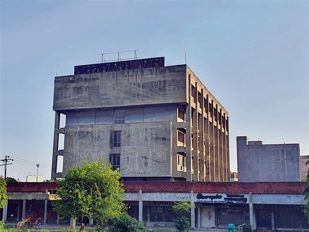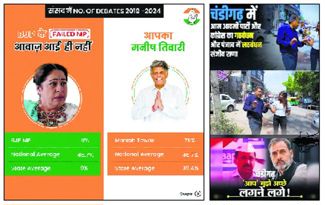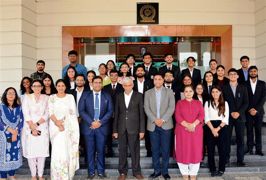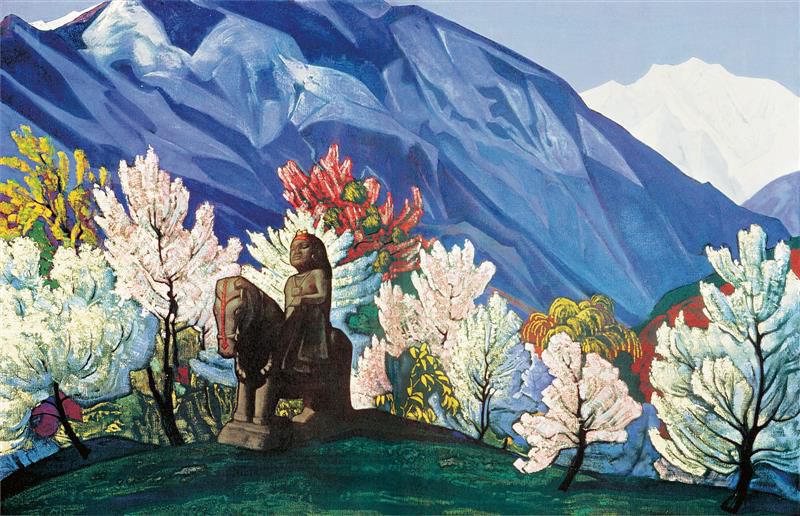
Guga Chauhan. Kuluta, 1931. Photos courtesy: International Roerich Memorial Trust
Shakti S Chandel
“When you look at these paintings… you seem to catch the spirit of those great mountains which have towered over the Indian plain and been our sentinels for ages past. They remind us of so much in our history, our thought, our cultural and spiritual heritage… that we cannot help feeling a great sense of indebtedness to Nicholas Roerich...” — Jawaharlal Nehru on Roerich’s paintings
THIS year marks the 150th birth anniversary of the renowned Russian artist and philosopher, Nicholas K Roerich (1874–1947). To commemorate it, an exhibition titled ‘The Master’s Universe’ was recently held at the Russian Centre of Science and Culture in New Delhi. A total of 174 photographs from the Roerich archive and several dozen reproductions of his paintings were on show; films — ‘Roerich Pact’, ‘Peace through Culture’, ‘Time to Gather Stones’ and ‘Following the Master’s Route’ — were shown. The purpose of the jubilee exposition was to reflect in detail on the most profound creativities of the artist.
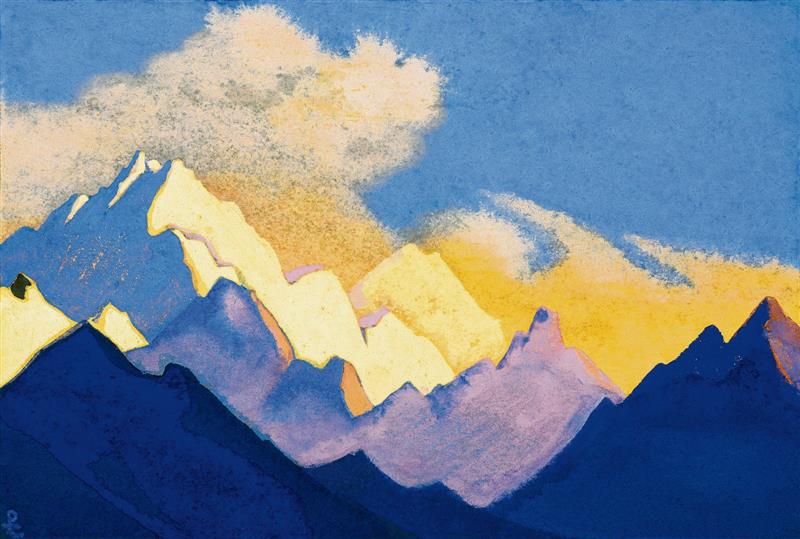
Roerich and his family were in Finland when the 1917 Revolution occurred in Russia. Disheartened with the political developments in the country and the Bolsheviks’ coming to power, he decided not to return to his motherland. He reached London and tried to realise his dream of going to India with his family, but, for various reasons, failed to do so. In 1919, he met poet Rabindranath Tagore and developed a lifelong friendship. Tagore impressed him greatly. In his essay ‘Tagore and Tolstoy’, Roerich remembered with great enthusiasm this first meeting, which finally resulted in the Roerichs coming to India in 1923.
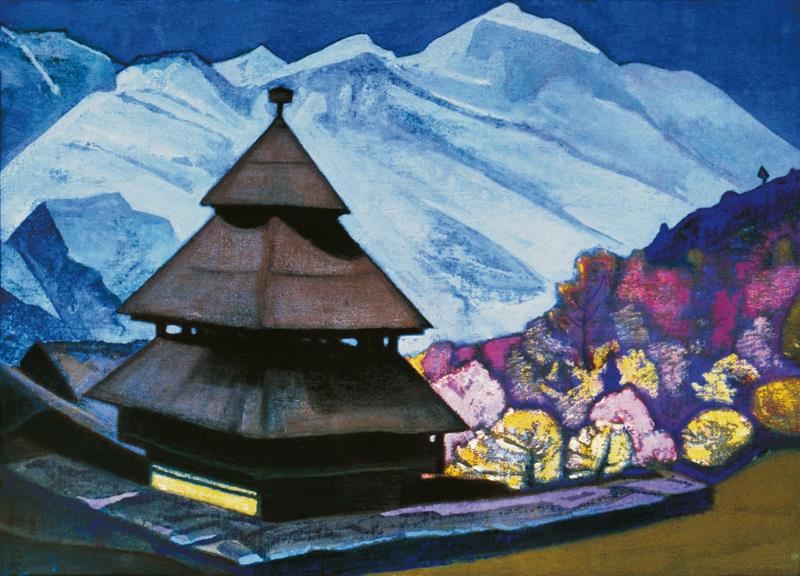
Rich legacy
In the early 1990s, Roerich’s younger son Svetoslav and his celebrity wife Devika Rani set up three Roerich Trusts. The first was International Roerich Memorial Trust established at Naggar in Kullu. The second was Tataguni Estate, Bengaluru, and the third was in Moscow. The State Museum of Oriental Arts in Moscow has an outstanding collection of art of Roerich and Svetoslav. Nicholas Roerich Museum in New York is dedicated to his works. At Naggar, a curator from Moscow, Larisa Surgina, has been looking after the art gallery and the museum for the last 10 years. About 80,000 tourists visit the gallery every year; it is open on all days, except Mondays and on national holidays.
Once here, he fell in love with the country with all his heart and soul. Probably no other country, besides Russia, played such an important role in Roerich’s life and art as India did. “India,” he wrote, “I shall always think of you with the same feeling of joy as of the first flower upon a spring meadow.” In the book ‘Altai-Himalaya’, he concluded: “We know thy fragrant essence, India! We know the depths and fineness of thy thoughts. We know the great ‘Aum’, which leads to the inexpressible heights. India, we know thy ancient wisdom.”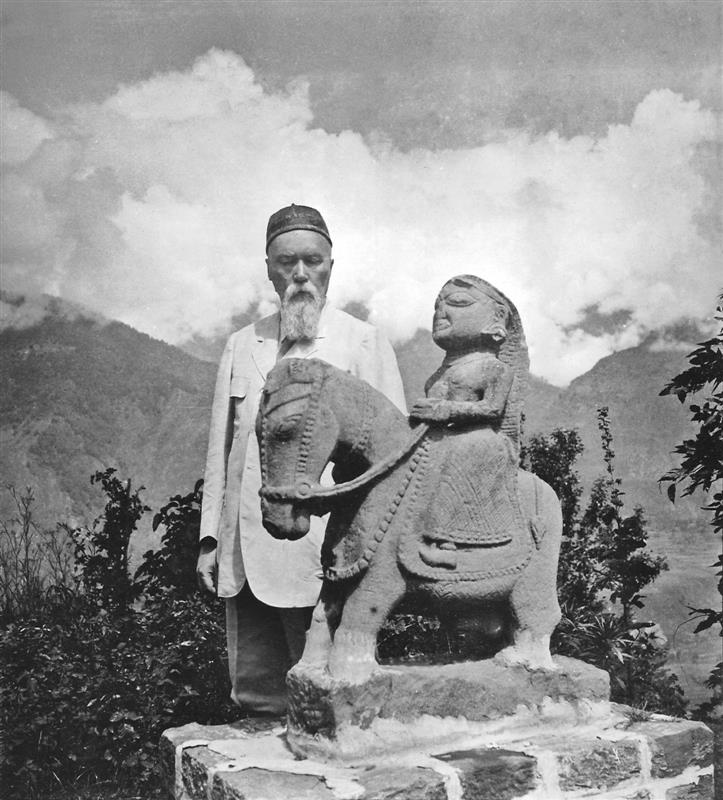
Roerich, along with wife Helena and sons Yuri and Svetoslav (who later married Hindi film actress Devika Rani), came to Naggar (Kullu) in 1928 and settled down there. He spent the last 20 years of his life in the picturesque Kullu valley with the backdrop of the snowy mountains. He fell in love with India’s unique culture and philosophy. He painted the great Himalayas in myriad moods and colours. He managed to capture the amazing mountain world, truly revealing its spiritual essence and a cosmic dance of the elements. His paintings are full of strange enchantment. One cannot pass by his canvases without experiencing a deep emotion. Indeed, his creativities brought forth to life ancient oriental legends of India and images of the great sages.
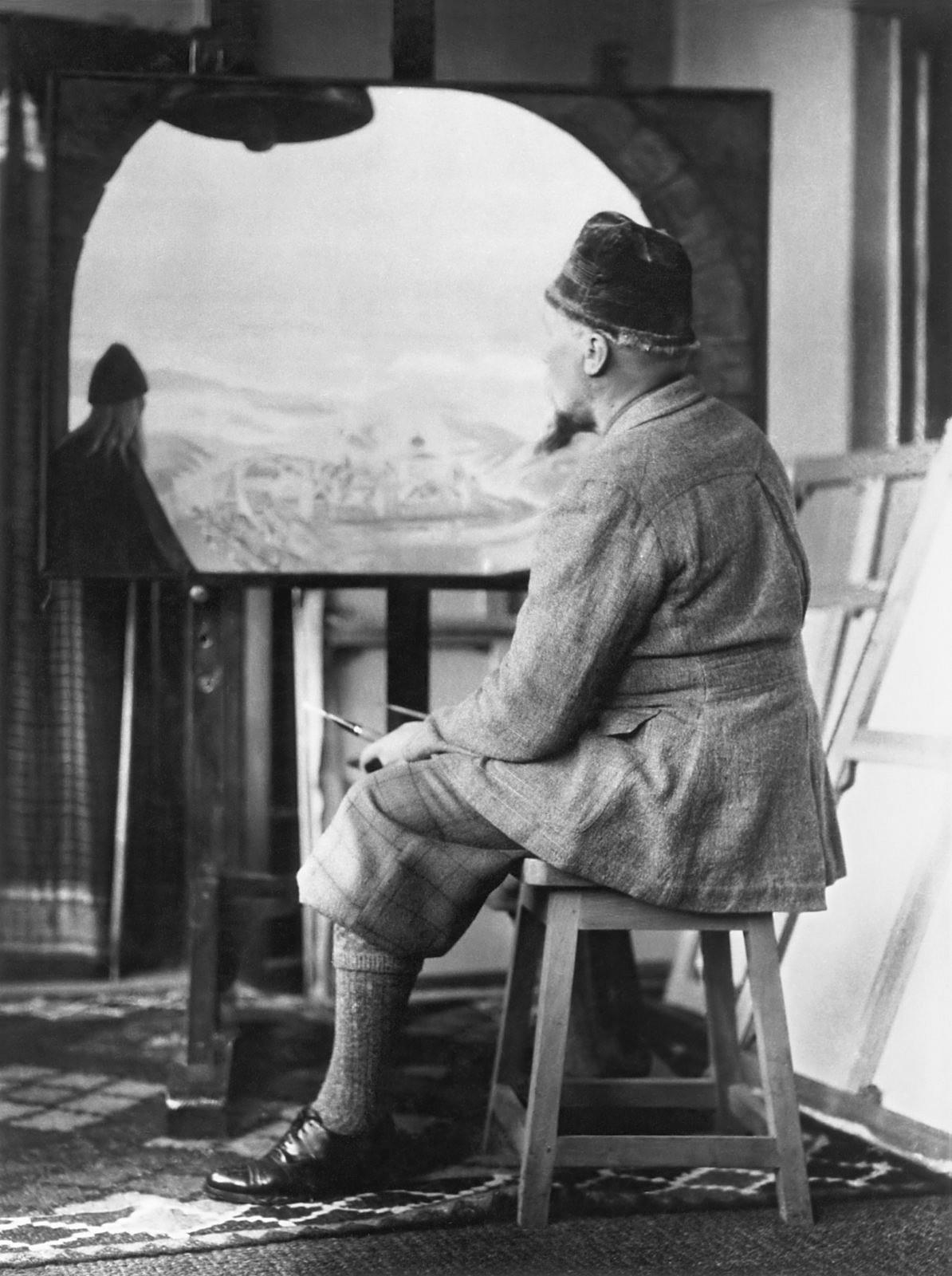
The distinguished historian, Dr Kalidas Nag, wrote: “We are grateful to him that he composed the colourful picture-epic of the snowy Himalayas. Roerich is the first Russian ambassador of beauty, who has brought to India the deathless message of art and we are ever grateful to him for his inspiring thoughts and his loyal cooperation in bringing the souls of Russia and of India closer.”
During the last 20 years of his life, Nicholas Roerich cultivated spiritual, scientific and creative ties between Russia and India, which became the basis of a solid cultural bridge for the strong friendship between the two countries. At Naggar, he founded the Uruswati Himalayan Research Institute dealing with subjects such as ethnographic studies and linguistic explorations, work on Tibetan-English dictionary, Ossetic folklores. A department of natural sciences and allied researches included botanical and zoological studies.
Throughout his career, Roerich was involved with the problems of cultural preservation. He came to realise that the cultural heritage of each nation is in essence a world treasure. All must be protected from the ravages of war and neglect. While living in the distant world of Kullu, he composed a treaty, The Roerich Pact, which laid the foundation for the creation and activities of UNESCO. Just as the Red Cross is embodied in a protective sign and banner (flag), so does the Roerich Pact designate a symbol to be flown at all sites of cultural activity and historical value, declaring them neutral, independent of combatant attacks.
The Roerich Pact was first agreed upon by 21 nations and signed as a treaty in the White House in the presence of President Franklin D Roosevelt, on April 15, 1935, and by all the members of the Pan-American Union. It was later signed by other countries also. That very year, Roerich was nominated for the Nobel Prize.
Today, with 7,000 paintings to his credit, Roerich has a place all his own in the world of art. His pen, too, has carved out a niche for itself. His book ‘Joy of Art’ had an Introduction by Dr S Radhakrishnan and ‘Wonderful Unity’ had a Foreword by Rabindranath Tagore. Roerich developed friendship with many greats of India, including CV Raman, Jagdish Chandra Bose and Abanindranath Tagore. In 1942, Jawaharlal Nehru and his daughter Indira paid a visit to the Roerichs’ Naggar home. The future leaders of India spent several days in conversation with him.
In July 1947, Roerich’s health deteriorated. He was bedridden for three months and passed away on December 13.
— The writer is life trustee of International Roerich Memorial Trust, Kullu
Join Whatsapp Channel of The Tribune for latest updates.





















